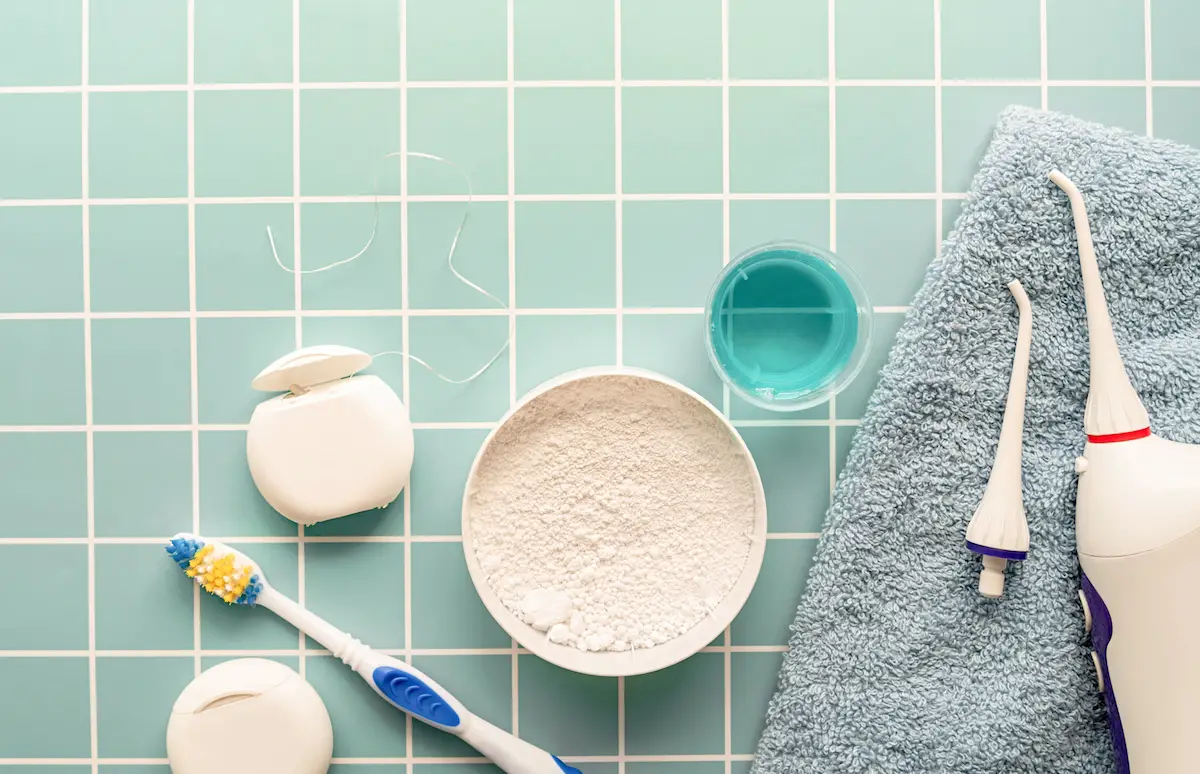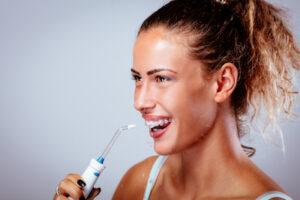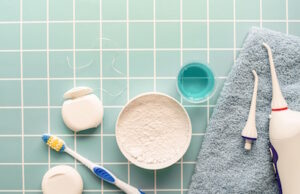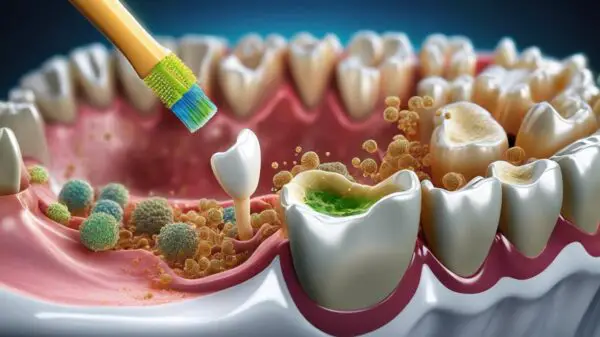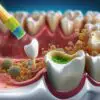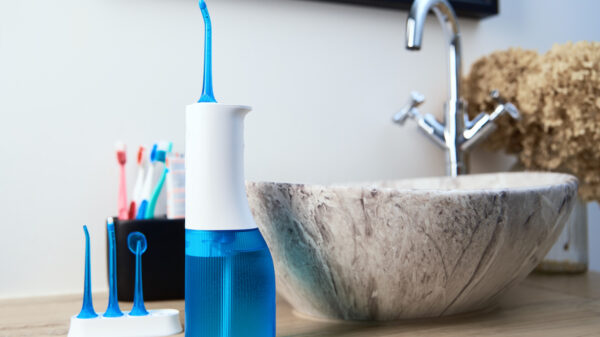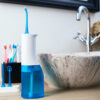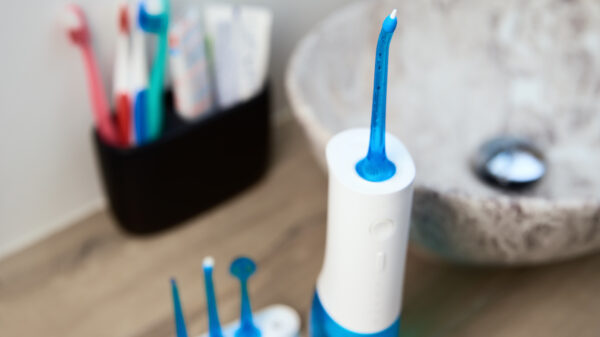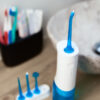What To Do If Your Waterpik Flosser Stopped Working
The Waterpik Flosser has become an indispensable tool in many households, revolutionizing the way we maintain our oral hygiene. Its efficient water jet technology promises to make flossing easier and more effective than ever before. However, like any electronic device, it’s not immune to issues that can render it non-functional. If you find yourself wondering, “Why did my Waterpik Flosser stopped working?” you’re not alone. Here are the main reasons your water flosser isn’t working:
- Lack of water flow
- Battery or Power Issues
- Water Leakage
- Nozzle Blockage
- Internal Malfunctions
In this article, we will go into more detail on each of these possible issues and how you can troubleshoot them and hopefully fix your Waterpik!
How A Waterpik Flosser Works
Before we dive into reasons your Waterpik flosser stopped working, it may be helpful to understand how they work in the first place. A Waterpik Flosser operates on the principle of utilizing a pulsating water stream to clean and floss between teeth and along the gumline. The device consists of a water reservoir, a motorized pump, and a handheld wand with a specialized nozzle. As the user powers on the Waterpik, water from the reservoir is pumped through the nozzle at a controlled pressure. This focused and pulsating stream of water effectively dislodges and removes plaque, debris, and bacteria from areas that traditional floss might find challenging to reach. The adjustable pressure settings allow users to tailor the intensity of the water stream to their comfort level and specific oral health needs. The pulsating action of the water not only cleans but also stimulates the gums, promoting improved circulation and overall gum health. In essence, the Waterpik Flosser offers a convenient and efficient alternative to traditional flossing methods, contributing to a more comprehensive oral hygiene routine. Now let’s start troubleshooting!
Lack of Water Flow
One of the most common issues users encounter with their Waterpik Flosser is a lack of water flow. When you turn it on, but no water comes out, it can be both perplexing and frustrating. This problem often arises due to clogs or blockages within the device’s water reservoir or the water hose. To address this issue:
- Check the water reservoir: Ensure that it is filled with water to the recommended level. If the reservoir is empty or not adequately filled, the Waterpik won’t function.
- Clean the water reservoir: Over time, mineral deposits or residue from tap water can accumulate in the reservoir. Cleaning it with a mixture of vinegar and water can help dissolve these deposits and restore proper water flow.
- Examine the water hose: Inspect the hose for any kinks, bends, or blockages. Straighten out any kinks and clear any obstructions that may be hindering the flow of water.
Battery or Power Issues
If your Waterpik Flosser is battery-operated or has a rechargeable battery, power-related problems can be a reason for it to stop working. Here’s what you can do:
- Check the battery or power source: Make sure the battery is charged or replace it if it’s old and no longer holds a charge. For corded models, ensure the power cord is securely connected to a functioning outlet
- Inspect the power switch: Sometimes, the issue may be with the on/off switch itself. Ensure it’s functioning correctly and not stuck in the off position.
Water Leakage
Water leakage is another issue that users may encounter with their Waterpik Flossers. Leaks can occur from various parts of the device, including the water reservoir, the hose, or the nozzle. To address this problem:
- Check for loose connections: Ensure that all components of the Waterpik, including the nozzle, hose, and water reservoir, are securely connected. Loose connections can lead to water leaks
- Replace damaged parts: If you notice cracks or damage to any parts, such as the nozzle or hose, replace them immediately to prevent leakage.
Nozzle Blockages
The nozzle of your Waterpik Flosser plays a crucial role in delivering the water jet to clean between your teeth and gums. If the nozzle is clogged or blocked, it can impede the effectiveness of the device. To resolve this issue you need to clean the nozzle by removing it from the device and inspect it for any debris or buildup. Rinse it thoroughly to ensure it’s free from obstructions.
Internal Malfunctions
In some cases, the problem with your Waterpik Flosser may be due to internal malfunctions that require professional attention. If you’ve tried the above troubleshooting steps and the device still doesn’t work, it’s advisable to contact Waterpik’s customer support or take it to an authorized service center for diagnosis and repair.
Should I Fix My Waterpik Flosser Or Replace It?
Determining whether to fix or replace a Waterpik Flosser depends on the nature and severity of the issue. If you’re experiencing common problems like reduced water flow, nozzle blockages, or minor leaks, these can often be resolved through simple troubleshooting and maintenance efforts. Refer to the user manual for guidance on cleaning and addressing common issues. However, if the device has internal malfunctions or significant damage, or if it’s beyond the warranty period, it might be more practical to consider a replacement. Sometimes, the cost and effort involved in repairing certain issues may outweigh the benefits of investing in a new, updated model with enhanced features. Additionally, if your oral hygiene needs have changed, upgrading to a different Waterpik model that better suits your requirements could be a wise decision. Ultimately, a careful assessment of the problem, the device’s age, and your personal preferences will guide the decision-making process between fixing and replacing your Waterpik Flosser.
My Waterpik Flosser Stopped Working, Can I Fix It On My Own?
Fixing a Waterpik Flosser on your own is often possible for common issues like reduced water flow, nozzle blockages, or minor leaks. Many troubleshooting steps, such as cleaning the water reservoir, and nozzle, and checking for loose connections, can be performed easily at home. The user manual typically provides detailed instructions for these tasks. However, if the problem is more complex, such as internal malfunctions, or electrical issues, or if the device requires disassembly, it’s advisable to seek professional assistance. Attempting to repair intricate problems without the necessary expertise may risk further damage or void the warranty. If your Waterpik is still under warranty and experiences issues beyond your control, reaching out to the manufacturer’s customer support or an authorized service center is a prudent step. Professional technicians have the skills and knowledge to diagnose and address more intricate problems, ensuring the effective and safe restoration of your Waterpik Flosser.
Conclusion
A malfunctioning Waterpik Flosser can be frustrating, but in many cases, the issue can be resolved with a few simple troubleshooting steps. Whether it’s a lack of water flow, power problems, water leakage, nozzle blockages, or internal malfunctions, understanding the potential reasons behind the problem is the first step toward a solution. Regular maintenance and proper care of your Waterpik can also help prevent these issues from occurring in the first place, ensuring that you continue to enjoy the benefits of this innovative oral hygiene tool. We hope our article about why your Waterpik flosser stopped working has been helpful, thank you for reading!
Related Questions
How often should I use my Waterpik Flosser?
Using your Waterpik Flosser once a day is generally recommended for optimal oral hygiene. Incorporating it into your daily routine, either in the morning or evening, helps remove plaque, debris, and bacteria from between teeth and along the gumline, promoting a healthier mouth. However, individuals with specific dental conditions may receive personalized advice from their dentist on frequency.
Can I use mouthwash or other solutions with my Waterpik?
Yes, many Waterpik models allow the addition of mouthwash or antibacterial solutions to the water reservoir. This can enhance the cleaning effect and contribute to better gum health. However, it’s essential to check your specific Waterpik model’s guidelines, as some may have restrictions on the types of solutions that can be used.
What if my Waterpik Flosser stopped working or has reduced water flow?
If your Waterpik experiences issues such as reduced water flow or stops working altogether, there are several troubleshooting steps to consider. Check the water reservoir for proper filling, inspect the hose and nozzle for blockages, ensure the battery is charged or the power cord is connected securely, and examine for any visible damage. If issues persist, consult the user manual or contact Waterpik’s customer support for further assistance or information on authorized service centers.



